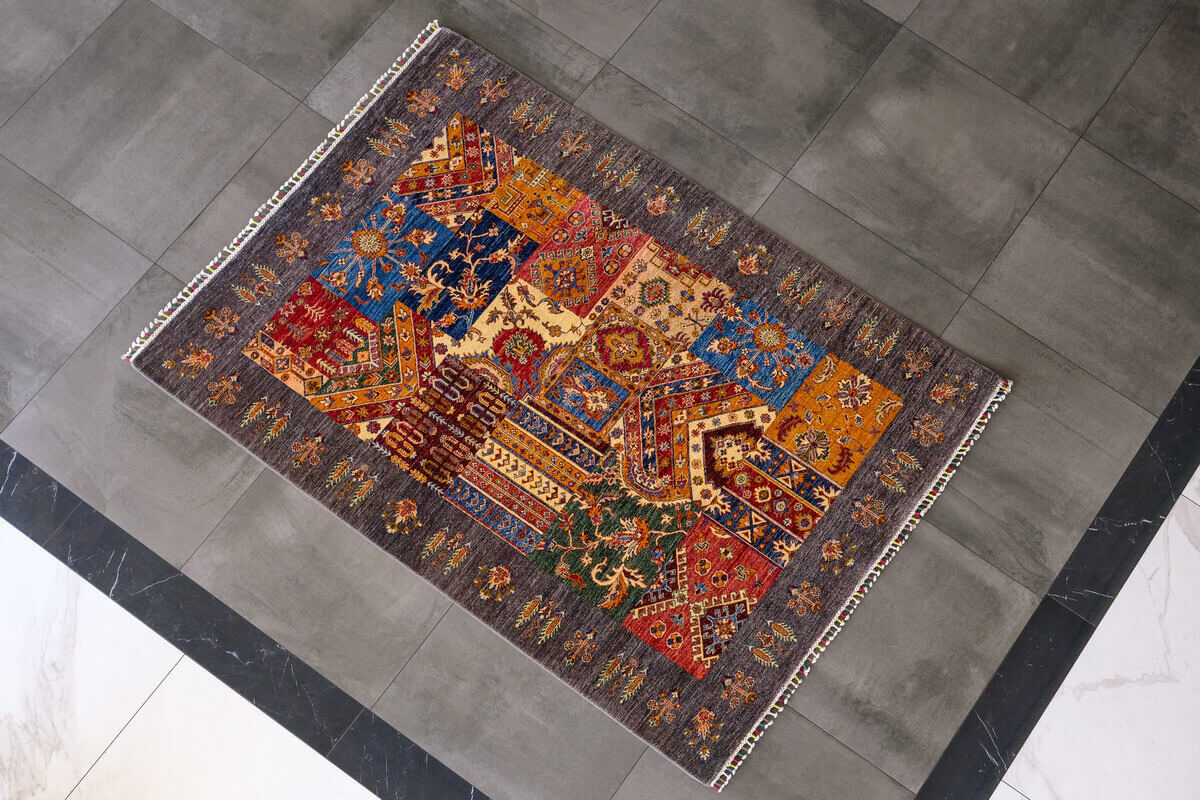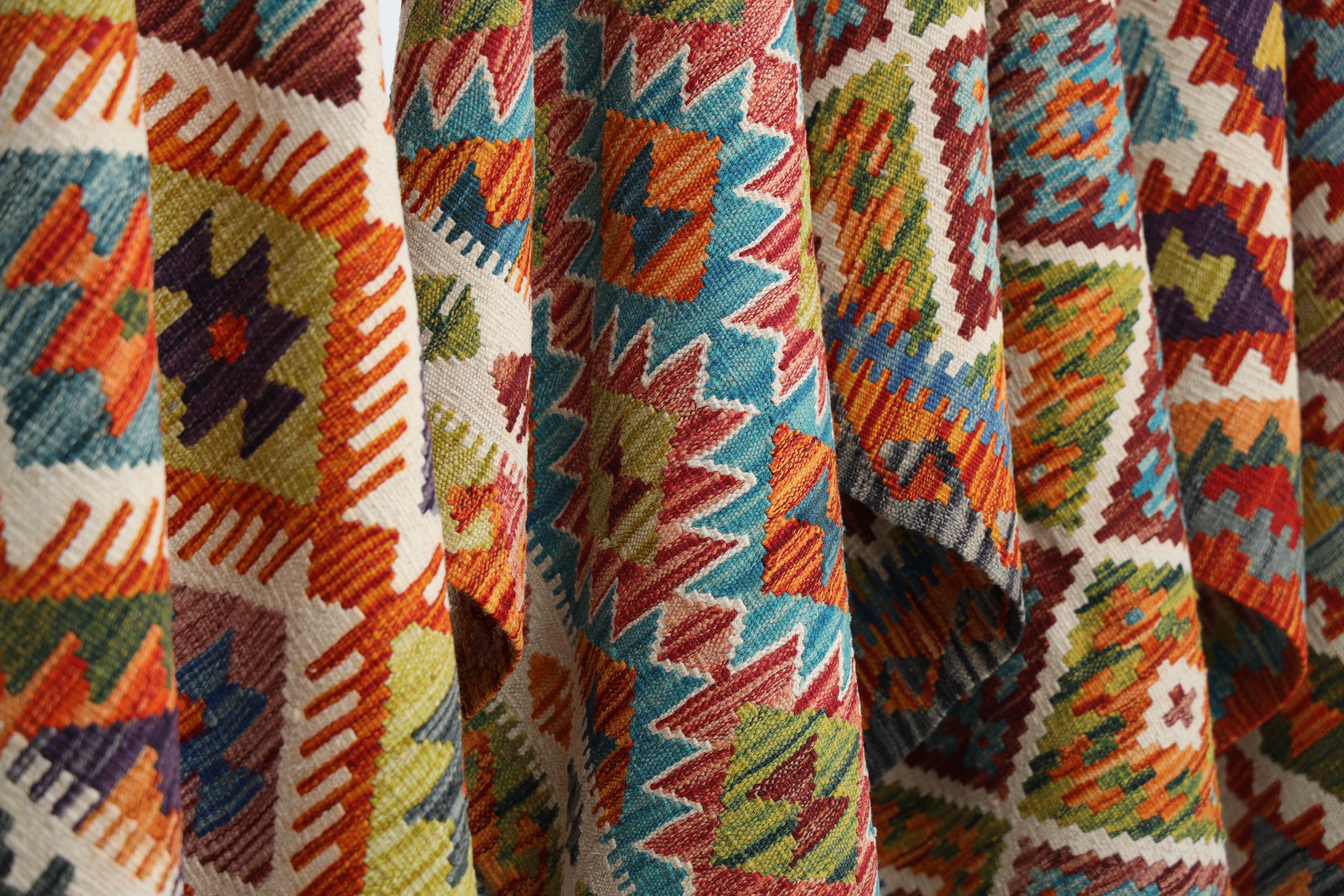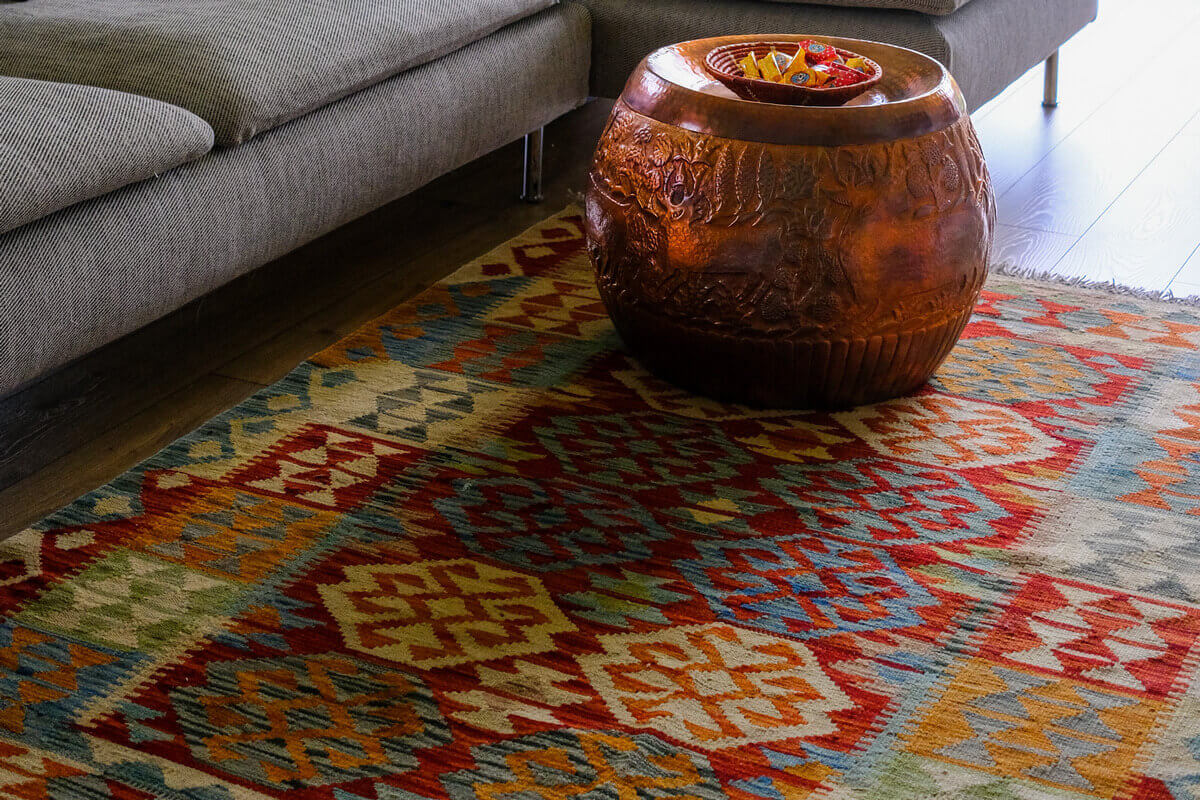The History and Origin of Hand-Knotted Carpets
Hand-woven carpets were created in the Middle and Far East over 2,000 years ago. Nomadic tribes of Central Asia used them as a tent floor with aesthetic and practical values: they protected against the cold, decorated the interior and gave it a homely character. In the interiors of houses, they also began to be used as wall decoration, and patterns and ornaments became more and more complicated and varied. Carpets were most often made of wool, cotton and silk. Silver and gold threads made of these precious metals were also used for those woven for special occasions.
How are oriental rugs woven?
Carpets are woven on vertical looms, with vertically wound warp threads, around which short yarn threads gathered in bundles are wrapped, creating patterns. Due to this, the carpet may have a warp of cotton, jute or wool, and a top layer of wool, cotton or silk. The upper surface of the carpet is carefully trimmed to an equal pile height after weaving. The underside of the carpet has the same pattern as the top, but does not have a pile.
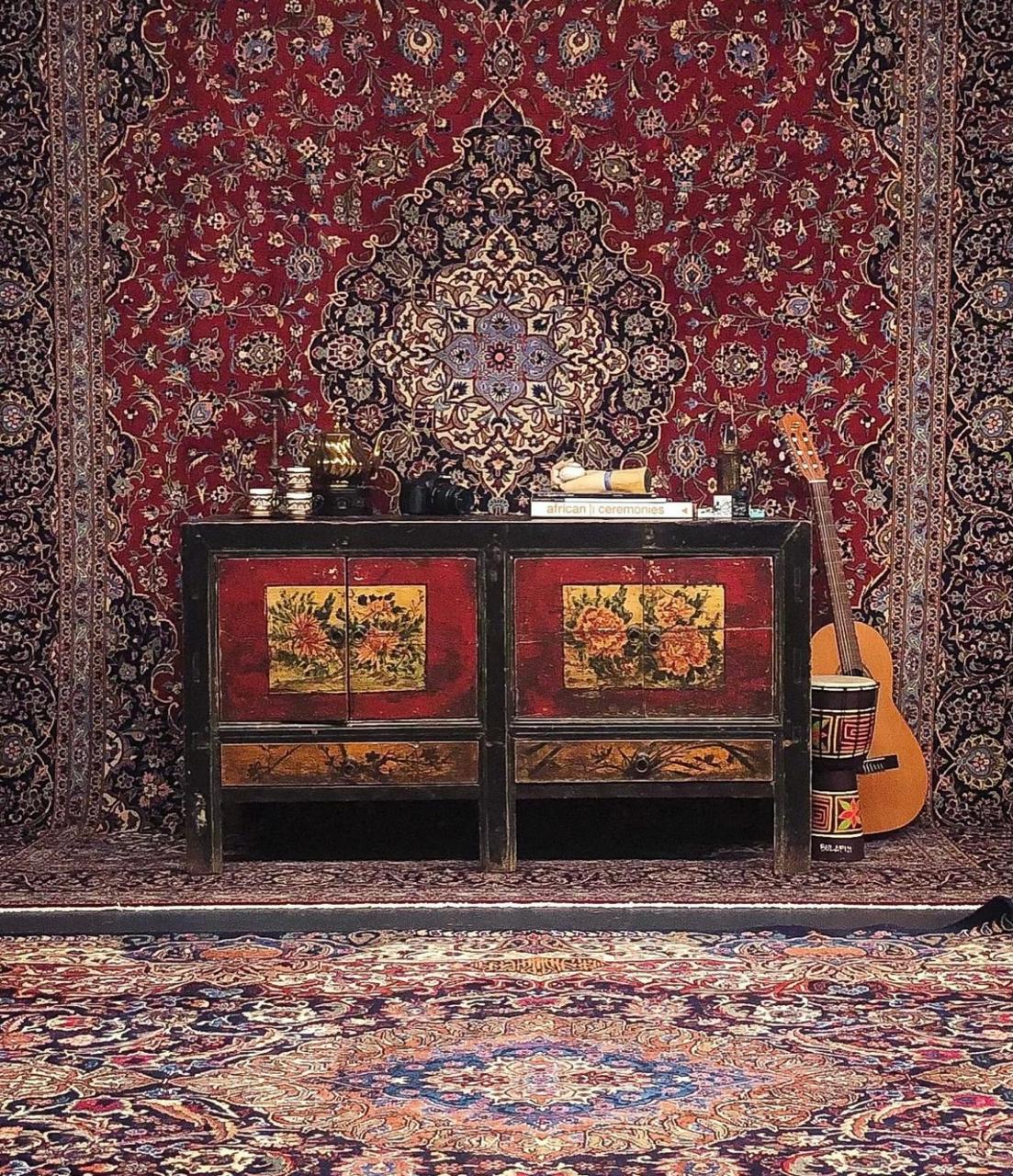
A method of dyeing hand-woven carpets and a return to tradition
Threads were dyed with natural pigments until the end of the 19th century, and synthetic dyes were introduced later. Until the end of the 18th century, hand weaving was a typical occupation of women not only in Asian countries, but also in Europe. It was not until the turn of the 18th and 19th centuries that machine production became widespread, thanks to the introduction of spinning and weaving machines. The spread of affordable machine products led to the disappearance of the tradition of hand spinning and weaving. However, at the end of the 19th century and at the beginning of the 20th century, people began to turn to the value of hand-made fabrics, also based on the designs of famous painters and designers.
Patterns used on oriental rugs
The patterns of carpets are very diverse and experts are able to determine their origin and age based on them. Generally, due to religious and cultural conditions, plant, animal and geometric patterns predominate. From the first quarter of the 20th century, carpet patterns that were expected by customers from Europe and America also began to appear.
What distinguishes a high-quality carpet
Hand-woven wool rugs are much more valued than machine-made ones. Their quality of workmanship depends on the skills and artistic abilities of the makers, as well as the type of yarn and dyes used. All of the above-mentioned elements affect the quality of the rug's pile and its durability, and, of course, its artistic value. The quality of the rug is measurably indicated by the number of tufts per unit of surface area - the more of them there are, for example, per square measuring 10x10 cm, the higher its value and class.
Hand-woven kilims – history and origin
The homeland of kilims is Anatolia, a vast land that currently occupies part of the territory of Turkey. A hand-woven kilim is characterized by a different type of weave than a carpet – it is made using the so-called flat technique. It is also double-sided, because the horizontal weft thread intertwines the vertical warp threads in a continuous manner, creating the same pattern on both sides of the fabric. As a result, these woven carpets are more compact and do not have a pile, and both sides are flat-woven. However, they are exceptionally durable, often slightly rough and coarse to the touch, due to the specificity of the wool yarn and the texture of the weft thread.
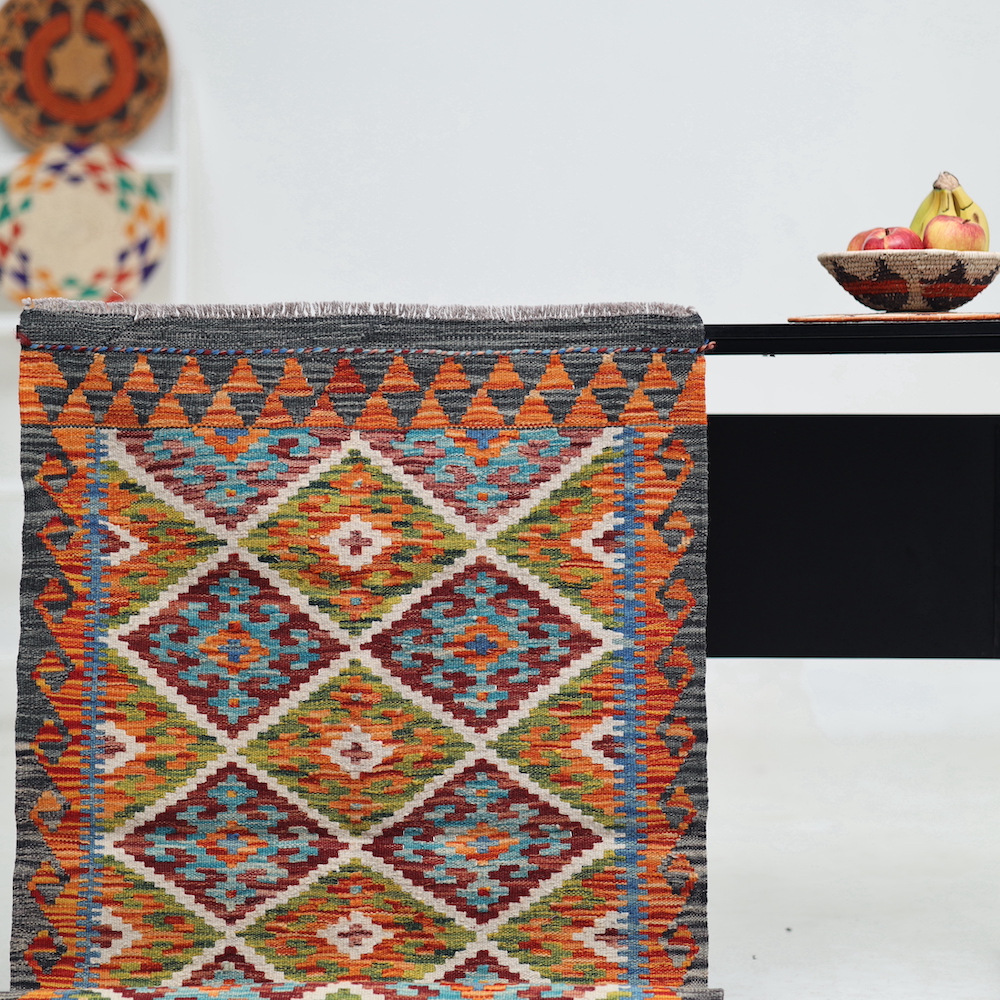
The difference in design between kilims and traditional rugs
The patterns on kilims are usually less rich and more geometric than those on carpets, which does not mean they are less attractive. You could even say that they fit perfectly into contemporary interiors, because their patterns bring to mind modern geometric graphics. Another common motif is the so-called tree of life and stylized plant patterns. Usually, the edge is surrounded by a border, i.e. a decorative trail consisting of repeating elements in colors referring to the kilim. It is a kind of picture frame, which particularly emphasizes the decorative nature of the kilim, also as a decorative fabric for the wall.
The colors of the kilims
The colors of hand-woven kilims are very diverse. Some, through the use of yarn in a natural dark beige color as the basic background base, and on it colorful patterns, are more subdued. Traditional kilims are often in the so-called earth colors, in the range of rust, brick, brown, sand and terracotta, diversified with muted greens, navy blues and shades of red. Modern kilims are often characterized by more vivid or pastel colors, adapted to interior trends and the needs of recipients.
The use of kilims in interior design
Hand-woven kilims are also used for decorative pillows and upholstery of furniture. Due to their cost, as upholstery fabrics they are used primarily in hand-carved furniture of the highest quality.
Kilim pillowcases are highly valued all over the world due to their beautiful patterns and colors, natural material and durability. It is important to be aware that these are not soft pillows "for cuddling" or sleeping, but decorative interior elements that can also serve as a back support or a seat on the floor. As pillowcases, they are quite heavy, compact and stiff. Thanks to this, they retain their shape very well after being filled with filling. As in the case of hand-woven wool carpets and kilims, the patterns and colors of Anatolian kilim pillows have virtually no limits. They have been made for generations by local women, who express their personality, mood and emotions in the fabrics they create, referring to tradition and contemporary trends. Customers can therefore choose decorative pillows that best suit the character of the interiors they are decorating.




Recycling hand-woven rugs and carpets
Pillows are often made from hand-woven Anatolian kilims and vintage carpets, often several decades old. Of course, before being cut into new products, they are washed and dried for several months in the hot summer sun of Turkey. Not even a small piece of valuable fabric is wasted, smaller fragments are used to create patchwork kilim pillows, coasters, wallets and purses. It is safe to say that the economical management of valuable, hand-woven kilims and carpets in Turkey, the creation of kantha in India from saris no longer suitable for use, or patchwork fabrics in Anglo-Saxon countries, have preceded contemporary recycling trends by many years.

